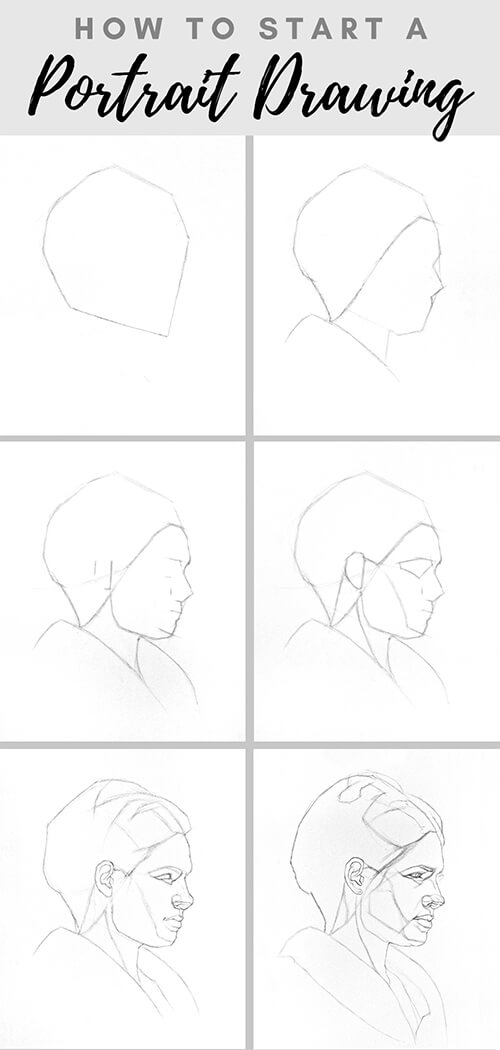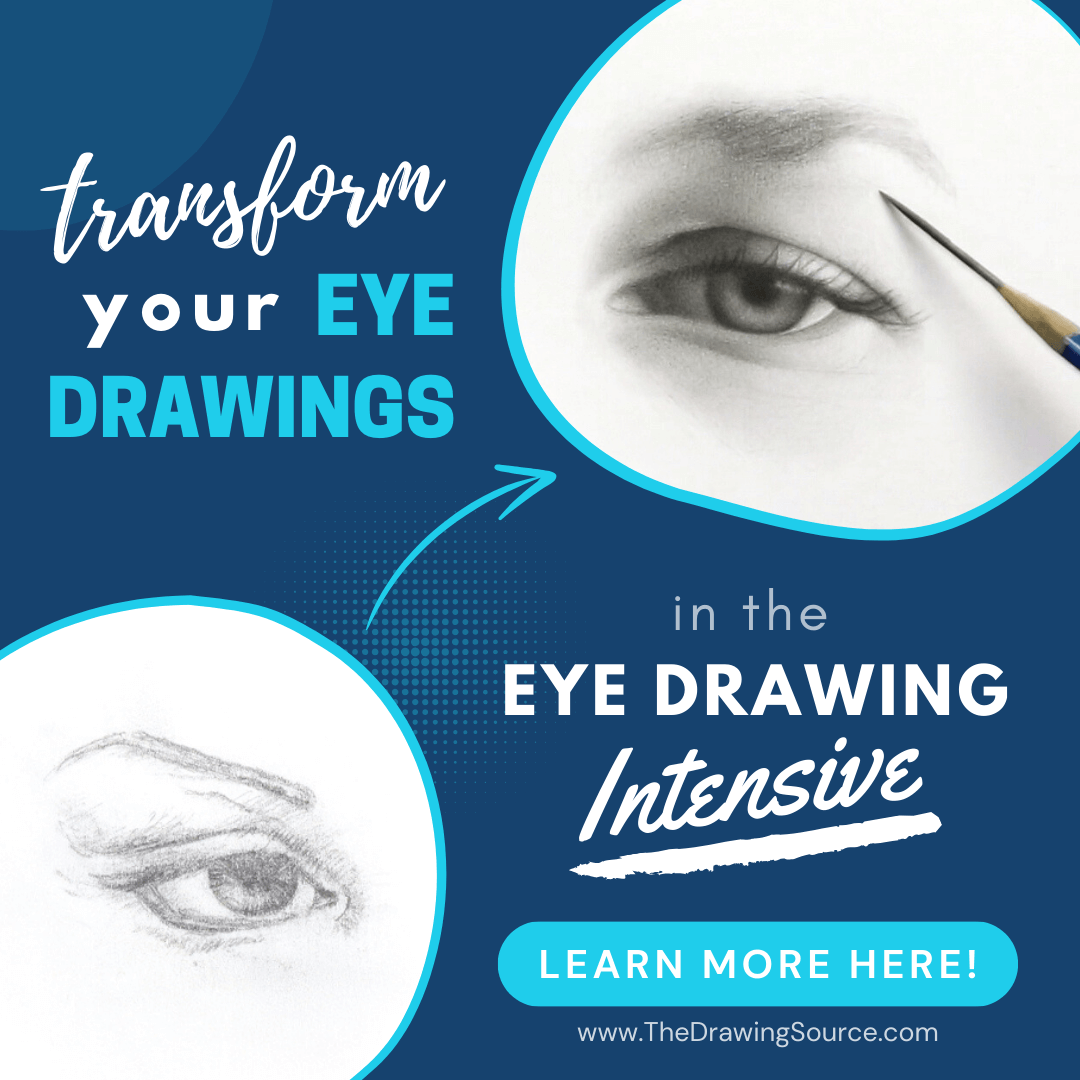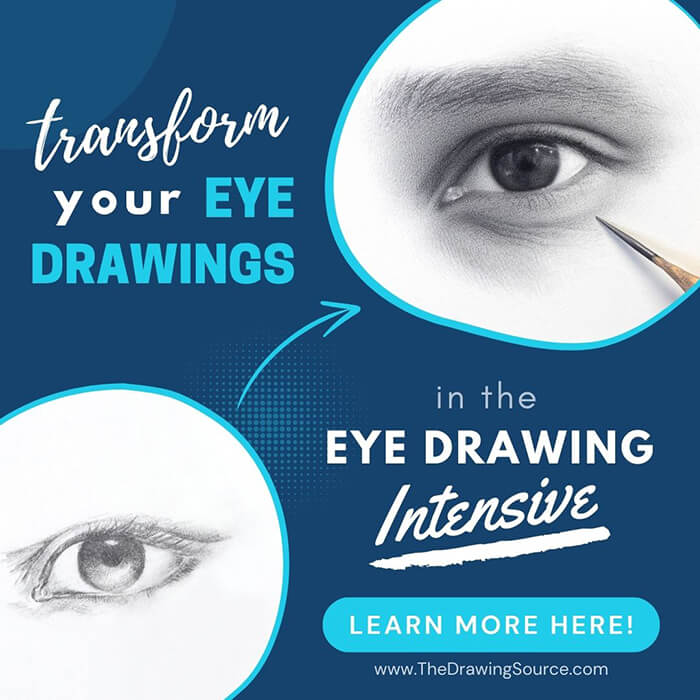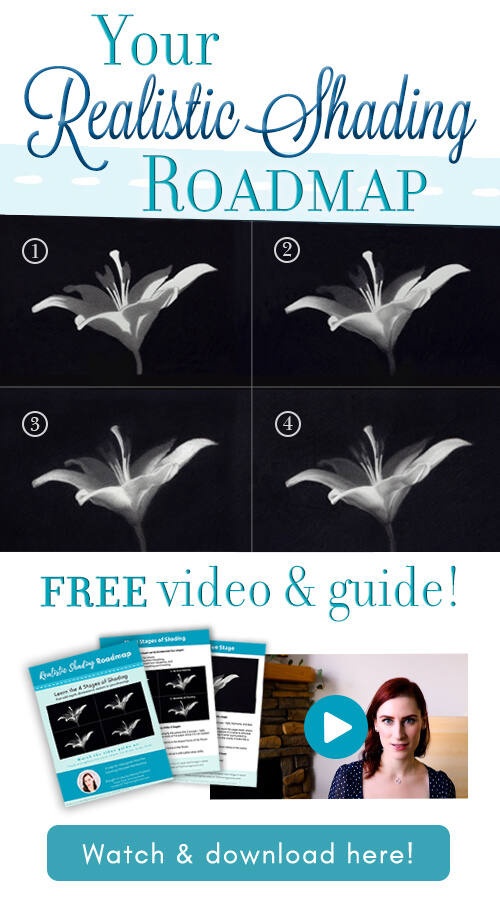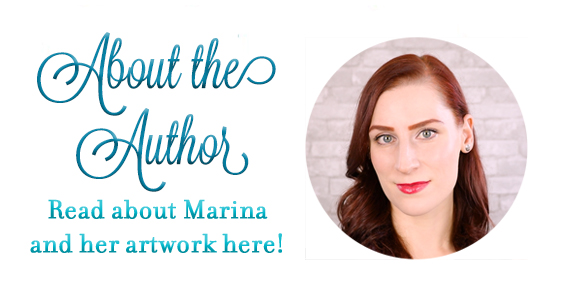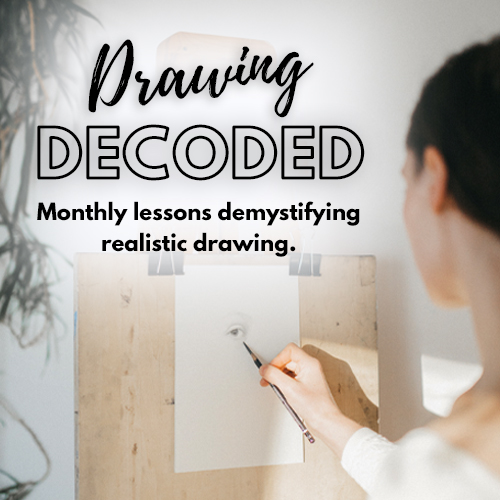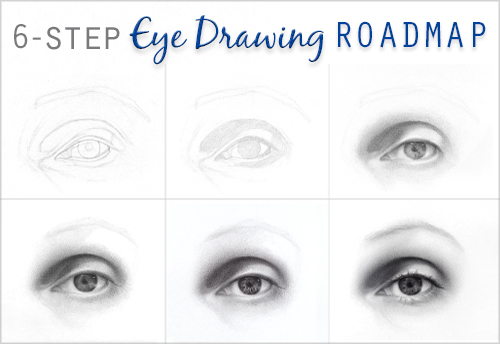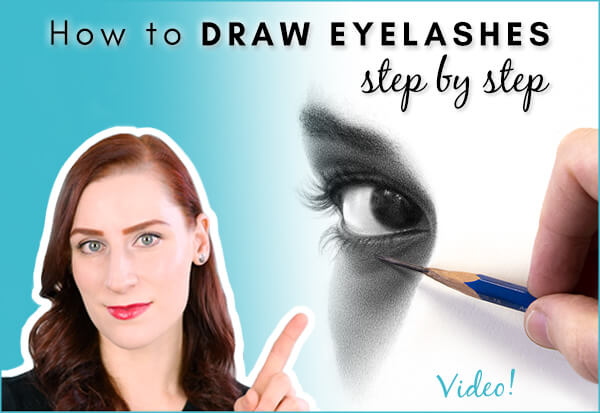- Home
- Portrait Drawing
- Portrait Drawing Tutorial
Portrait Drawing Tutorial: Part 1
Blocking in the Portrait
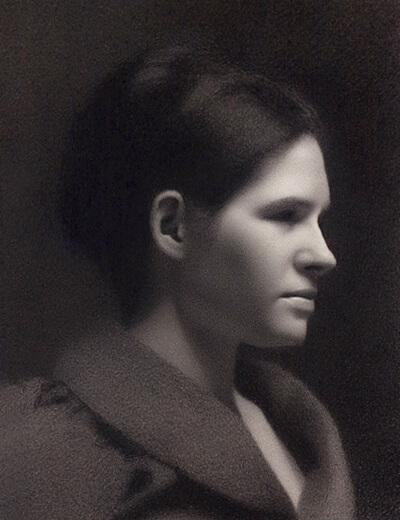
The first half of this portrait drawing tutorial is all about drawing the 'block-in,' which can be thought of as a map, or blueprint, for shading.
It's a detailed line drawing that addresses proportions, placement and construction of the head and features, shadow shapes, and even edge quality.
(Not sure what 'edge quality' is? Take my free video course on the 6 stages of a realistic drawing to find out!)
At the end of this page, make sure to click through to Page 2 of the Portrait Drawing Tutorial, where I demonstrate how to shade (or render) the drawing. Let's get started!
A F T E R T H I S L E S S O N:
Don't miss:
Tutorials on drawing the features of the face:
- How to Draw Realistic Eyes
- Video Series: Most Common Eye Drawing Mistakes (and how to avoid them!)
- Video Series: How to Draw More Realistic Eyelashes
- How to Draw Realistic Eyebrows
- How to Draw Realistic Lips
- How to Draw an Ear on Toned Paper
And my in-depth course on drawing realistic, believable eyes:
Portrait Drawing Tutorial
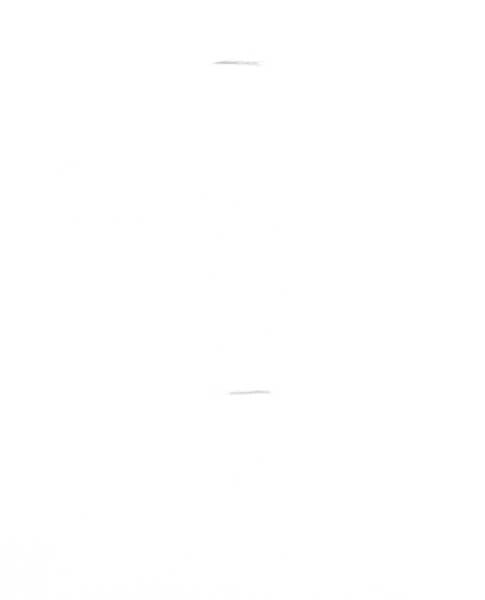
Step one! Decide how large you want your drawing to be on your paper.
Jot down a measurement that will indicate the height of the drawing, as I have done here.
As always, work from 'general to specific'.
This means that you start with the largest, most general measurements
(such as the height and width), and then move to incrementally smaller
measurements until you get to the smallest, most specific ones.
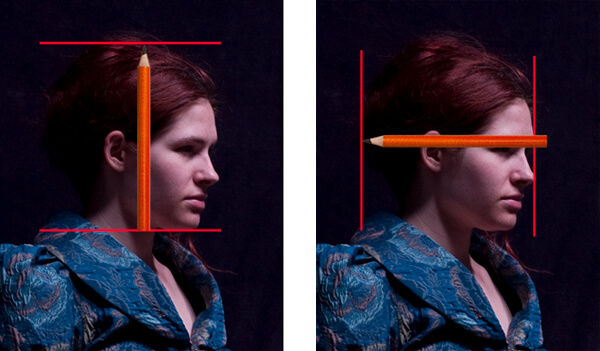
To figure out the width of the head, I measure
the height with my pencil, from the chin to the top of the head, and
then compare it to the width.
Learn how to use comparative measurement in my free mini-course.
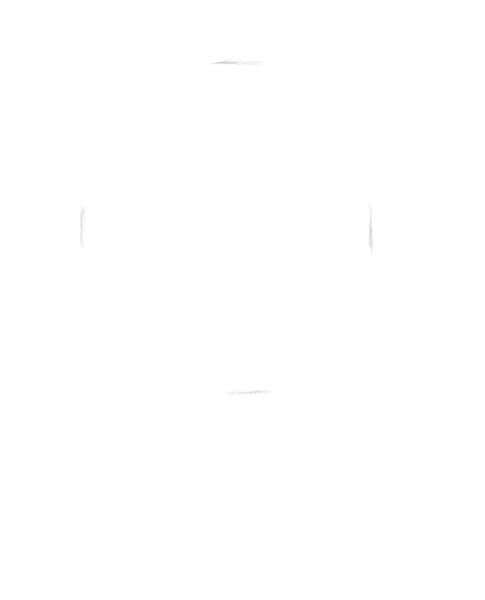
I notice that the width is slightly narrower than the height, and indicate this on my drawing.
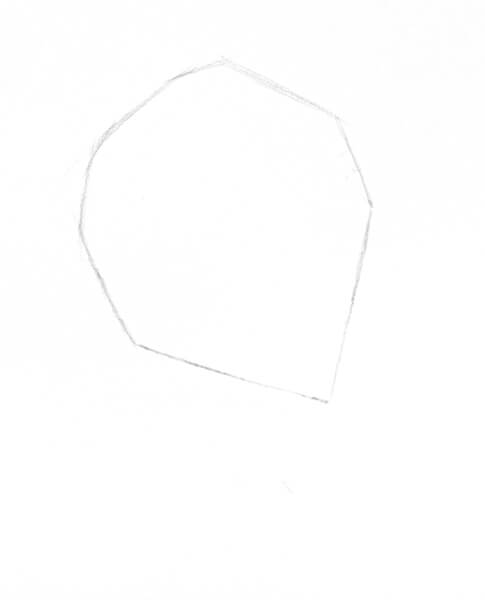
I begin to map out the general shape of the head. I draw with light, straight lines so that they are easy to erase and edit.
Visualizing the Angles of the Head
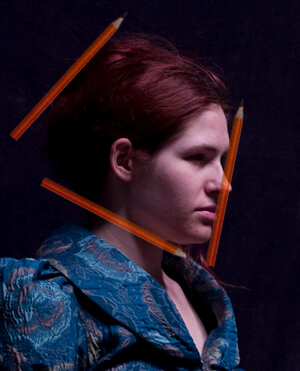
There aren't many truly straight lines when drawing something organic (like a person!).
Everywhere you look, you get some degree of curvature.
However, creating the angles of the head with straight lines as opposed
to curved ones will result in a more accurate drawing later on.
To help yourself visualize straight lines, extend your pencil in front of you to see the angles of the head more clearly.
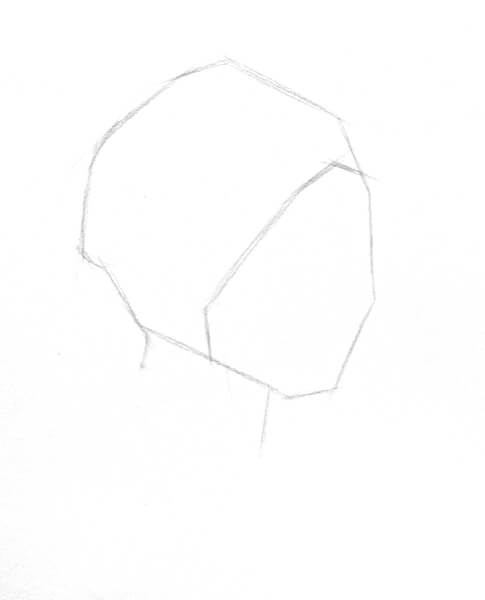
I begin to refine the contour of the head by breaking up the angles into smaller, more specific segments.
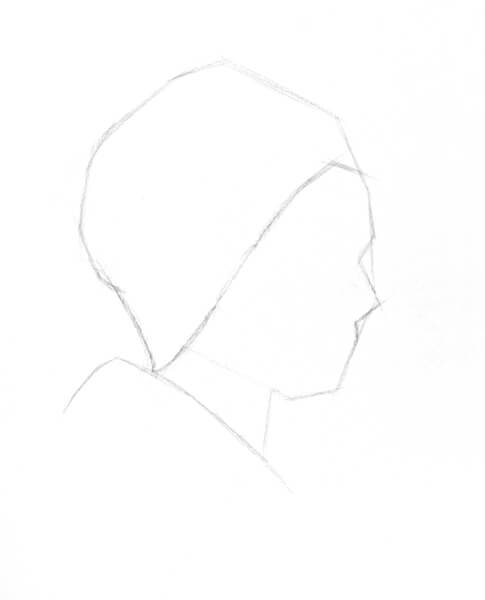
Something I want to emphasize in this portrait drawing tutorial is to look for lines that flow into one another.
For example: the hairline flows right into the line of the shadow being cast onto the neck. When connected, these lines create a beautiful S-curve.
The more elements you can relate to each other on the face (such as
these two lines), the more accurate and organic-looking your block-in
will be.
Drawing the contour of the profile
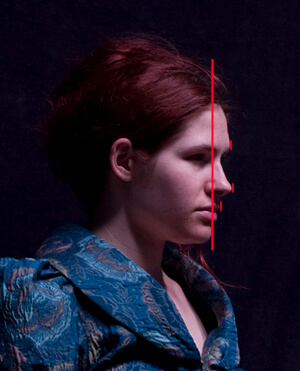
As you begin drawing the contour of the profile, imagine vertical axis lines from which you can measure certain points on the face.
For example: I can imagine a vertical line originating at the front of the model's chin.
This helps me to see how far the lips, nose, and forehead extend to the right of the line.
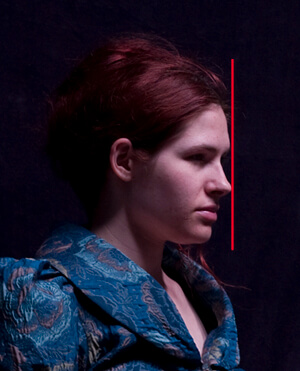
I can also imagine a straight vertical line at the tip of the nose.
This clearly shows me that the forehead almost reaches the line, but not
quite. The nose extends to the right ever so slightly more than the
forehead.
Now I know where to draw the forehead in relation to the nose!
You can create these imaginary axis lines anywhere, and use them in any way that they're helpful to you.
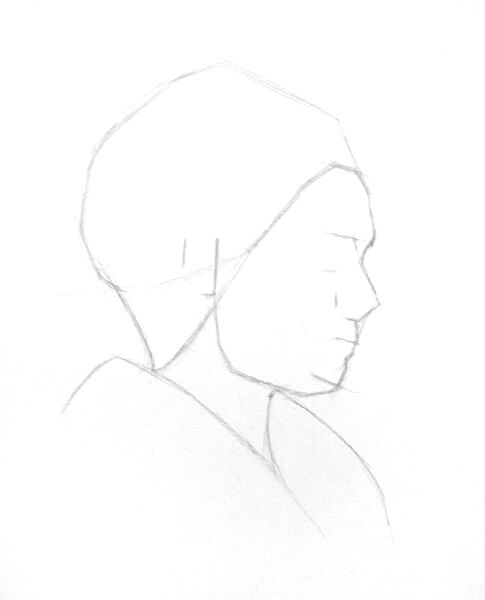
Continuing the block-in for this portrait drawing tutorial, I now approximately place the ear and the features of the face.
"Features of the face" refer to the eyes, nose, lips and ears. Don't miss these step by step tutorials on drawing the features of the face:
- How to Draw Realistic Eyes
- How to Draw Eyebrows
- How to Draw Realistic Lips
- How to Draw an Ear on Toned Paper
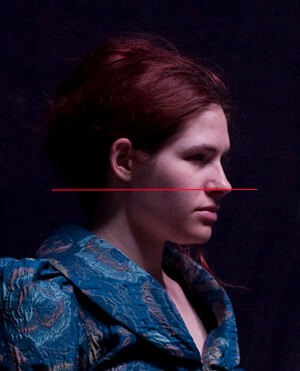
How did I place the ear?
Since I have already found the approximate location of the nose, I
imagine a horizontal line through the tip of nose, and look to see how
far above this line to place the ear.
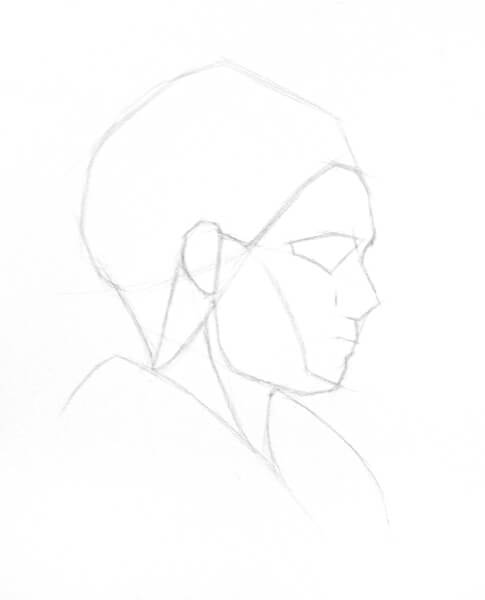
I continue blocking in the large shapes of the face.
During this part of the block-in, I greatly rely on gestures, or rhythms, to help me place and connect all the elements of my drawing.
Gestures are curved lines that flow from one element of a picture to
another, creating a kind of underlying structure that connects all the
elements in the image.
Refining the contour of the face
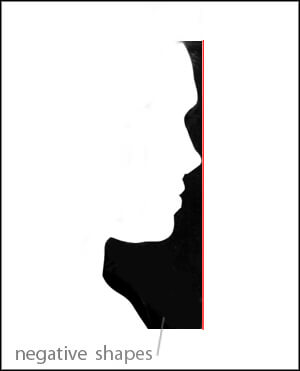
To refine the contour of the face, I again rely on the axis lines I used earlier.
Remember the vertical line that I imagined at the tip of the nose? Look at the shapes created between that line and the contour of the face.
These are called negative shapes (or negative space). "Negative" refers to the space where there is no form. So, naturally,
the "positive" shape would be the shape of the actual subject (the face).
Negative shapes are extremely useful in refining the contour of the face!
How to use negative shapes:
As you draw, try to forget that you are drawing a face. Forget that you
are drawing a forehead, a nose, lips and a chin. Instead, look at the
negative spaces as abstract shapes, and draw them as such! This slight
change in perspective may not seem like much, but it often
results in a more accurate drawing.
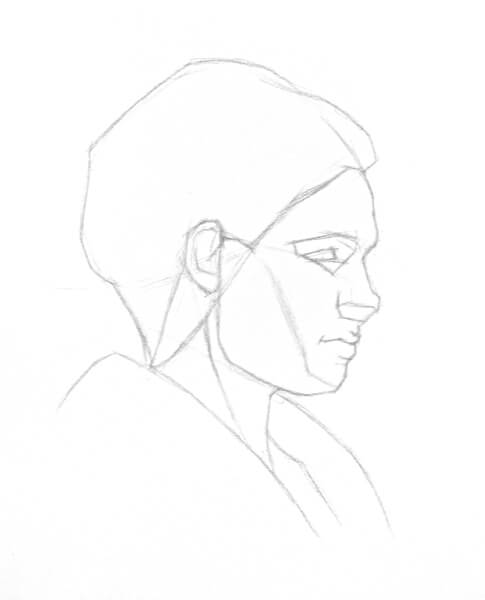
I use straight lines to block in the profile of the face, just as I did when I was blocking in the large angles of the head. Straight lines help to clearly indicate the high points (the most protruding points, or boundaries) on the profile.
Once I am confident in the placement of the features, I begin constructing them anatomically. This stage of constructing the features is a combination of what we see and what we know. Because we often can't see the construction of the features clearly, it's essential to have an understanding of what is there in order to construct them accurately.
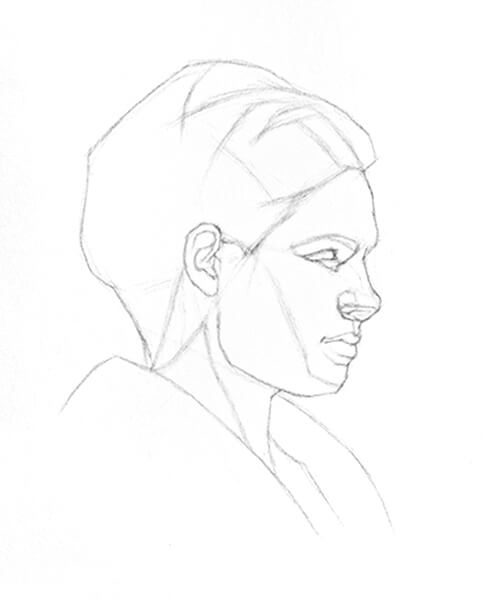
For example, light may wash out certain information on your model, or hide it in shadow; you might not be sitting close enough to the model to see enough detail, or perhaps the model has very soft angles that hide elements of the construction of the face.
In all of these cases, it's important to have an understanding of head and feature construction so that you can fill in these visual gaps.
View my tutorials of the features of the face listed on the portrait drawing page to start learning about their construction.
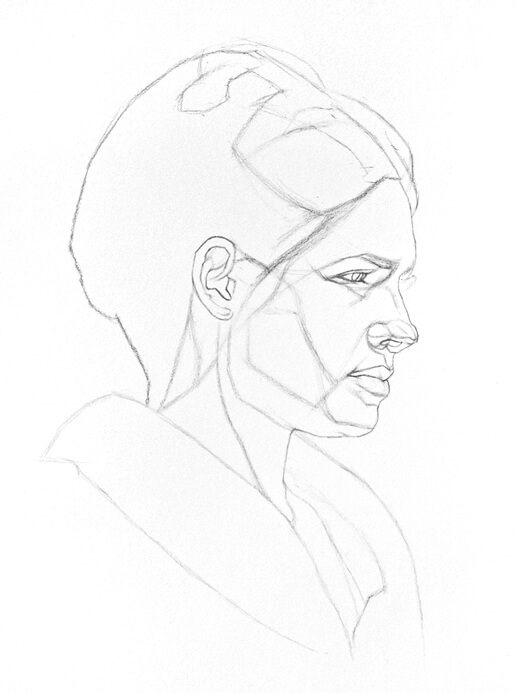
Voila! Here is my completed block-in for this portrait drawing tutorial.
I have constructed the features, drawn in the shadow shapes, and indicated some of the differences in edge quality. I have also left some of the flowing rhythm lines, because they remind
me that every element in my picture relates to something else, and that
nothing exists in isolation. If I keep this in mind as I render the portrait, I am more likely to create an organic-feeling, unified picture.
Next Steps
1) Download the infographic of this portrait drawing tutorial below:
2) Continue to Page 2 of the Portrait Drawing Tutorial, where you'll learn how to shade (or 'render') the portrait.
3) Dramatically improve your portrait drawings by improving one of the most compelling features: the eyes. Transform your eye drawings in my Eye Drawing Intensive!
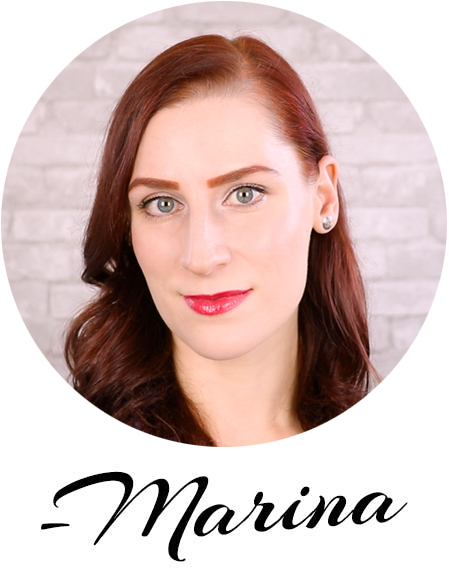
Enjoyed this page? Please share it!
Share buttons and pinnable image below:
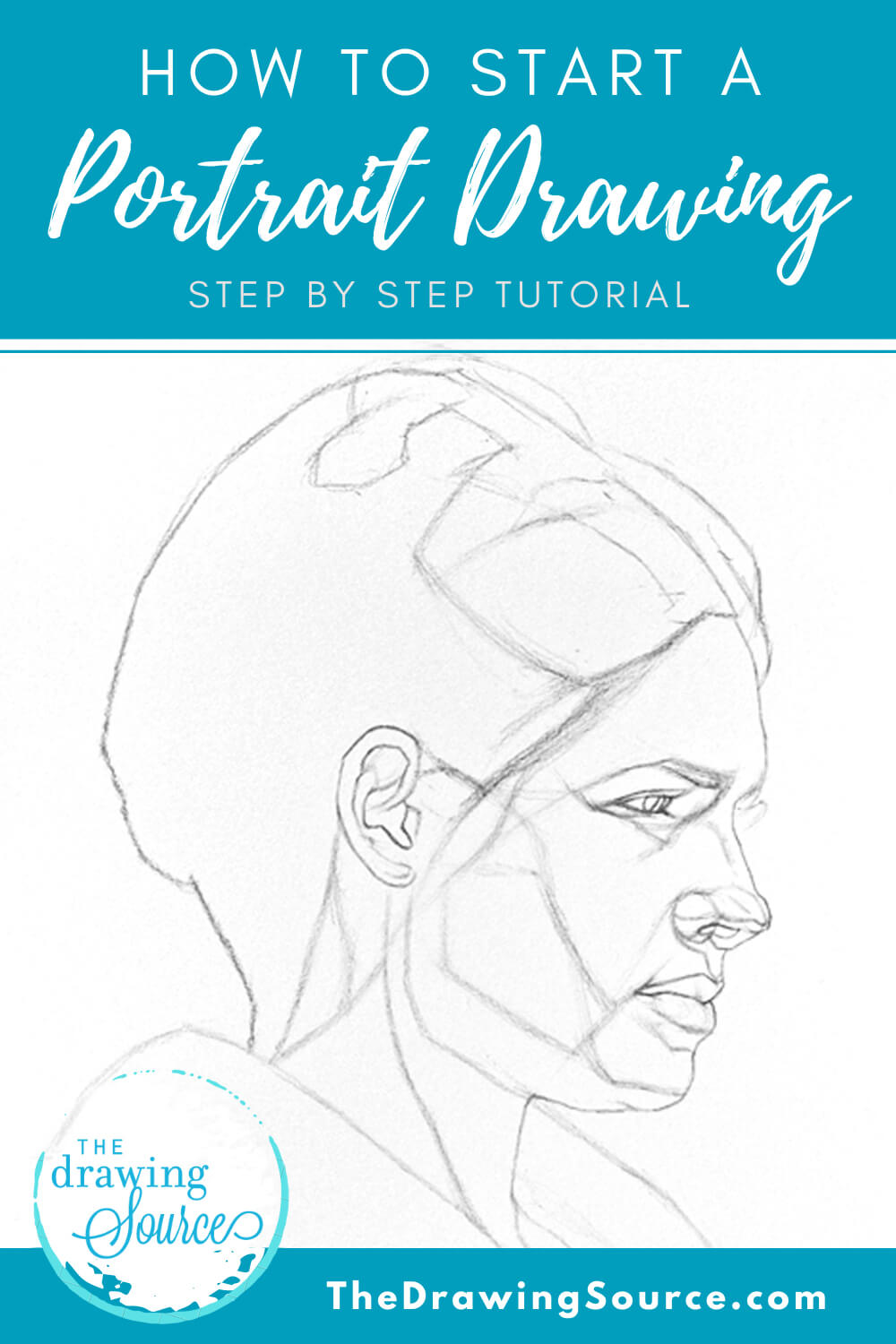
If you enjoyed this portrait drawing tutorial, you might also be interested in:
Related Pages
5 Proportions of the Face to Know
How to Draw an Ear on Toned Paper
Return to Portrait Drawing from Portrait Drawing Tutorial
